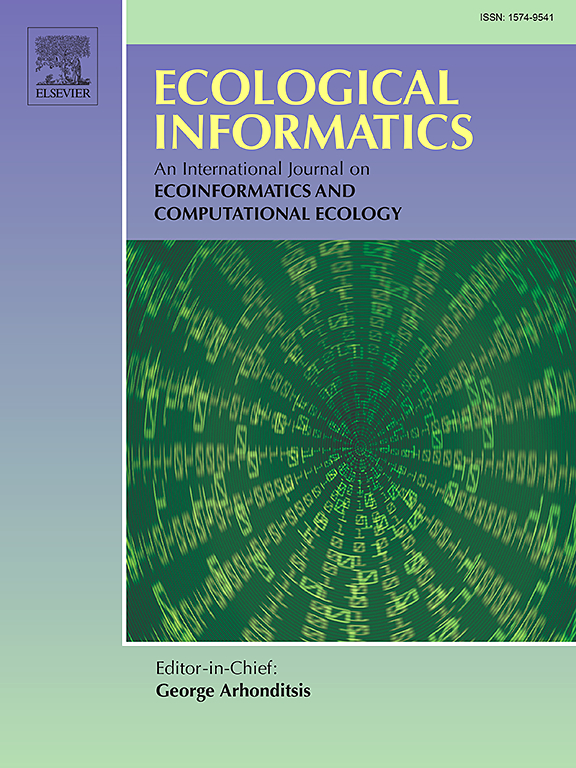A classifier-deduced signal extraction approach for time difference estimation in acoustic sensor networks
IF 5.8
2区 环境科学与生态学
Q1 ECOLOGY
引用次数: 0
Abstract
With the development of reliable AI-based species classifiers and the design of low-cost autonomous recording units, acoustic monitoring has become an emerging research field. Although strides are made in automated species monitoring, automated localization remains a significant challenge. Distinguishing and pinpointing bird sounds in noisy, reverberant, and dynamic natural environments is extremely difficult, ultimately deteriorating the accuracy of time difference estimations and, consequently, localization. In this paper, we take a significant step towards reliable automated localization by presenting a viable and generalizable approach to extracting species-dependent signals from intermixed acoustics, which we call Classifier-Deduced Signal Extraction (CDSE). These signals can be used to estimate precise time differences while retaining information for individual species. Our method seamlessly extends the current capabilities, requiring only minor modifications to state-of-the-art classifiers. We prove its applicability and usefulness by deploying it on bird acoustics using the popular bird species classifier BirdNET.

求助全文
约1分钟内获得全文
求助全文
来源期刊

Ecological Informatics
环境科学-生态学
CiteScore
8.30
自引率
11.80%
发文量
346
审稿时长
46 days
期刊介绍:
The journal Ecological Informatics is devoted to the publication of high quality, peer-reviewed articles on all aspects of computational ecology, data science and biogeography. The scope of the journal takes into account the data-intensive nature of ecology, the growing capacity of information technology to access, harness and leverage complex data as well as the critical need for informing sustainable management in view of global environmental and climate change.
The nature of the journal is interdisciplinary at the crossover between ecology and informatics. It focuses on novel concepts and techniques for image- and genome-based monitoring and interpretation, sensor- and multimedia-based data acquisition, internet-based data archiving and sharing, data assimilation, modelling and prediction of ecological data.
 求助内容:
求助内容: 应助结果提醒方式:
应助结果提醒方式:


